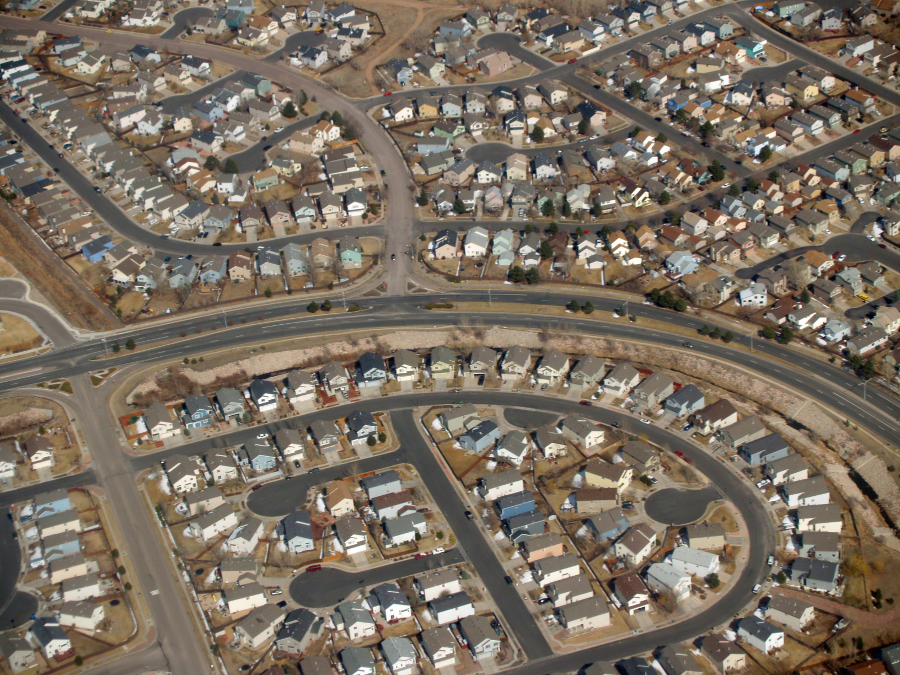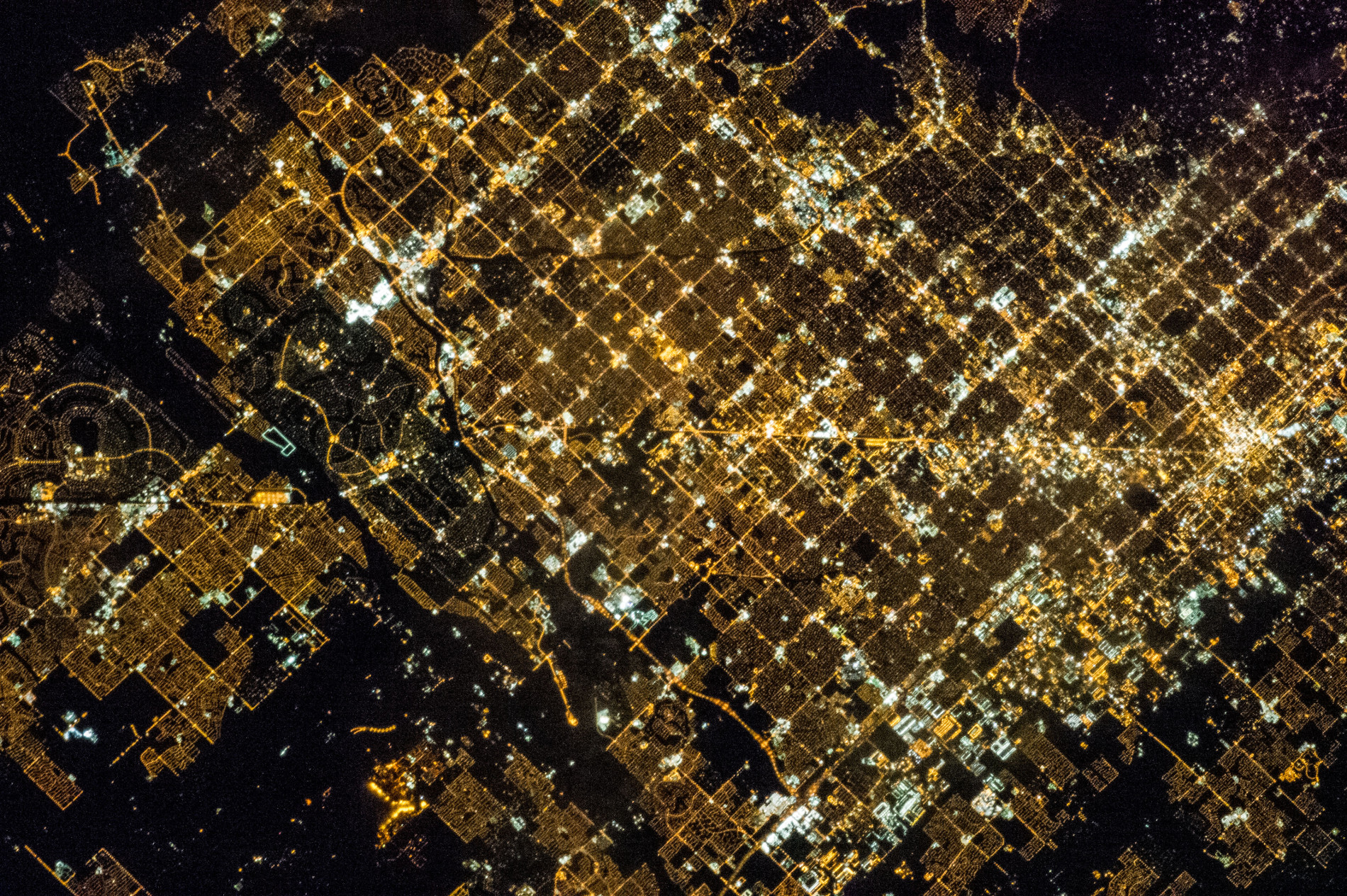
Driving change
Self-driving cars could reshape cities
Self-driving cars have gone from science fiction to fact in just a few decades, and could go mainstream within several more. Touted for freeing commuters from drudgery and stress, autonomous vehicles are likewise hailed as a boon to elderly and disabled people who are unable to drive. But this new technology may also have surprising consequences.
"Autonomous vehicles could provide the most dramatic transformation in urban transportation systems since the arrival of the motor car more than a century ago," said Adam Millard-Ball, UC Santa Cruz environmental studies assistant professor, who studies the intersections between transportation policy, urban planning, and climate change.
His recent work shows that self-driving cars could tip cities toward sprawl—or walkability. These shifts in urban form could either hasten or check the pace of climate change. And the way people react to autonomous vehicles will determine which of these wildly different futures becomes reality.
Millard-Ball's interest in research was sparked when he was a transportation planner and led a car-sharing study for the National Academies of Sciences' Transportation Research Board. "I realized research can be fun," he said.
His project with autonomous vehicles is a perfect example. While most self-driving car studies focus on the technical side, Millard-Ball investigated the impact of human behavior. "The assumption is that everyone will be nice and cooperative," he said. "But we know that's not how people always behave."
Street games

To explore the interplay between people's behavior and self-driving cars, he developed a model based on the game of chicken. In the classic version of this dangerous road contest, two drivers zoom straight towards each other and the loser swerves—or chickens out—to avoid collision, while the winner stays on course. In a twist, Millard-Ball pitted an autonomous vehicle against a pedestrian at a crosswalk.
"U.S. law gives pedestrians priority at crosswalks but it's almost never enforced, and in most places you would be taking your life in your hands if you asserted that right," he said. So, people's behavior on roads depends as much on social norms as on the law. Take Manhattan, for example, where pedestrians often assert their legal right of way at crosswalks. New York City drivers tend to expect this and usually slow down for people on foot. In many other places, however, the norm is for pedestrians to let drivers go first. After all, people on foot have far more to lose than those in cars.
"A pedestrian at a crosswalk is the most clear-cut example of where people's behavior differs from the rules of the road, and this is where you might expect to see the biggest changes," Millard-Ball said.
A big change is exactly what he saw. First, he modeled a game of "crosswalk chicken" between a conventionally-driven car and a pedestrian, and, as expected, the pedestrian yielded and lost. But when he substituted in a self-driving car, the pedestrian asserted the right to cross and won. "The pedestrian knows that the autonomous vehicle will not be drunk or distracted, and that it will follow the law," he explained, reporting his findings this year in the Journal of Planning Education and Research. "It's intriguing how autonomous vehicles could change norms because of how safe people feel."
Millard-Ball hasn't personally tested his theory, yet. "I want to step in front of an autonomous vehicle but always see them a bit too late," he said.
Building on his crosswalk chicken scenario, Millard-Ball envisions cities where pedestrians rule. In a city full of self-driving cars that always brake for people on foot, pedestrians could take over the streets. "They could cross with impunity even at midblock because they merely need to step into the street to force the risk-averse car to slow down," he said, adding that from the car's perspective it would be like driving down a street full of five-year-old children who could run out into traffic at any moment.
This scenario rings true for David Fields, a transportation planner at San Francisco consulting firm Nelson\Nygaard. "In locations with lots of pedestrians, such as lower Manhattan and the French Quarter of New Orleans, a vehicle could end up completely stopped as people recognize it won't move when they are in the way," Fields said.
Sprawl
While it's fun to think about the supremacy of pedestrians at a personal level, the crosswalk chicken game also has much larger-scale implications. Millard-Ball believes that by empowering pedestrians, self-driving cars could shift the shape of entire cities.
Urban patterns and the forces behind them are a major focus of Millard-Ball's research.
He's particularly interested in sprawl—urban development riddled with so many cul-de-sacs, dead ends, and T-intersections that it's hard to get around without a car. The disconnected streets that characterize sprawl occur in much of the developed world, but are most pervasive in the United States. "In most of the 20th century, policy pushed American cities to be more suburban and car-centered," he said.
Streets were laid out on a grid in most U.S. cities in the early 1900s, and these well-connected roads persist today in urban cores. Beginning in 1936, though, the Federal Housing Administration recommended cul-de-sacs for new development. "The assumption was that car travel was the future, and places should be built for driving," Millard-Ball said.
Sprawl is also typified by multi-lane arterial roads, often lined with walls, which surround and isolate cul-de-sac neighborhoods. Arterials let cars go fast, but can be challenging to cross on foot. "They make walking unattractive if not downright infeasible," he continued.
In a 2015 study in the journal Proceedings of the National Academy of Sciences, Millard-Ball and Christopher Barrington-Leigh of McGill University in Montreal analyzed street patterns of new construction in U.S. cities over the last century.
To their surprise, they discovered that sprawl is on the wane: after peaking in the mid-1990s, the number of disconnected streets fell roughly 10 percent over the next decade.
"The long march toward sprawl in the 20th century seems to have come to an end," Millard-Ball said, pointing toward the recent emphasis on walkable cities as a likely driver of this turnaround.
Planning policies like "smart growth," which concentrate new development in the urban core, also encourage connected streets and walkability. "I would probably advocate banning anything but essentially gridded road networks for new residential developments," Barrington-Leigh said. "Or at least implementing a very large "cul-de-tax"—a tax on cul-de-sacs—disincentive on low-connectivity road-building."

Virginia has statewide standards discouraging cul-de-sacs. Elsewhere, most urban planning policies are local. Municipalities that stand out for curbing sprawl in new neighborhoods include Dallas, which requires gridded streets, and Gainesville, Florida, which prohibits cul-de-sacs in some districts.
If empowered pedestrians do rule city streets in the future, as Millard-Ball's chicken crosswalk game predicts, they could shunt self-driving cars to the periphery of the urban core. This would free space now allocated to parking—which can account for nearly one-third of urban land—and allow denser, people-centered development within cities. "Between less parking and potentially less space dedicated to vehicle movement, our cities will literally find new real estate," transportation planner Fields said.
And this could make urban areas more appealing. "Cities thrive when they're lively because people like to see other people walking around having a good time," Millard-Ball said. "Autonomous vehicles may reinforce the advantages of cities by making them safer and more attractive."
Urban form and climate change
Another possible advantage of walkable cities is lower carbon emissions. "One of the reasons the U.S. is a high greenhouse gas emitter is because of the way cities are laid out—but most of the climate change discussion is on technology, for example, how effectively biofuels and electric vehicles will reduce emissions," Millard-Ball said. "We saw a disconnect: City form is key to deciding whether we drive or walk."
In a study published in the journal Environmental Research Letters, he and Barrington-Leigh followed up on their sprawl work and investigated how road patterns influence carbon emissions. Previous studies have shown that street patterns affect whether people own cars and how much they drive. For example, less-connected streets (such as cul-de-sacs and T-intersections) mean more driving. In contrast, more connected streets (those on a grid) mean less driving.
Using existing databases on household car ownership and commute mode, Millard-Ball and his colleague estimated the number of vehicle miles traveled in urban areas across the U.S. Next they looked for correlations between street patterns and two proxies for emissions—car ownership and vehicle miles traveled.
Their analysis revealed that urban form had an unexpectedly large impact on carbon emissions. At current rates, the trend away from sprawl and toward connected streets could reduce carbon emissions about three percent by 2050. And increasing the rate of connectivity could triple that, cutting emissions nearly nine percent in the same time frame. "It's quite remarkable how much potential connected roads have from a climate perspective," Millard-Ball said.
Indeed, the impact of connected streets compares favorably with other strategies for mitigating climate change. For example, doubling the density of most new development could reduce vehicle travel and associated carbon emissions nearly eight percent by 2050, according to a 2009 Transportation Research Board report.
In addition, the impact of connected streets may last longer than this strategy. Developments can easily be torn down and rebuilt to be less dense. But once streets are laid down, their patterns can persist for centuries. After London's Great Fire in 1666 and San Francisco's Great Earthquake in 1906, both cities were rebuilt along the lines of the original streets. "We cannot change what was already built in the past, so let's stop making more mistakes as quickly as we can," Barrington-Leigh said.

Turning point
Millard-Ball's work suggests that self-driving cars could accelerate the transition from sprawl to connected streets, boosting walkability in cities and cutting carbon emissions.
Or not.
Autonomous vehicles could also reverse the trend toward connected streets. In this alternate future, the ease of self-driving cars facilitates longer trips. As the website for Google's self-driving car program promises: "Time spent commuting could be time spent doing what you want to do." Enjoyable commutes could encourage people to live farther from work, promoting sprawl. Moreover, autonomous vehicles could increase driving by the elderly, blind, and disabled.
And more driving means more energy consumption, which means more carbon emissions. The range of possibilities is wide. Autonomous vehicles could cut energy use to a tenth of the current level—or double it, according to a 2015 Transportation Research Board report for the National Academies of Sciences.
"There's no set destiny toward which autonomous vehicles are taking us," Millard-Ball said. "Autonomous
While autonomous vehicles are projected to be widely used as early as 2030, much of the public is not yet ready to accept them. Self-driving cars may be statistically safer than human drivers, but there's still something unsettling about ceding control to a machine.
"Designing the human out of the driving system altogether is probably untenable for the time being," said Michael Nees, psychology professor at Lafayette College in Pennsylvania, who studies acceptance of self-driving cars. He thinks people will want to monitor and even override self-driving cars. "This is a different design philosophy than one that assumes the automation will work perfectly at all times and thus ignores the human driver altogether," he added.
Another unknown in a future with autonomous vehicles is how city planners will respond. "If policy makers treat pedestrians as a nuisance, for example, forcing them to go into tunnels to cross streets, that could discourage walking," Millard-Ball said. Alternatively, if regulators do nothing, that could encourage walking by allowing pedestrians to play chicken with autonomous vehicles and win.
Does Millard-Ball want a self-driving car? He's not sure. But he does know he'd enjoy living in the kind of people-friendly city that could be ushered in by autonomous vehicles. "I'd like to be able to live without owning a car," he said. "I'd like to have that choice."
Paradoxically, as his own work shows, the rise of autonomous vehicles could give Millard-Ball—and many other people—the option of a car-free life.

